Best Budget Mic Preamp Hardware ($100 to $1000)
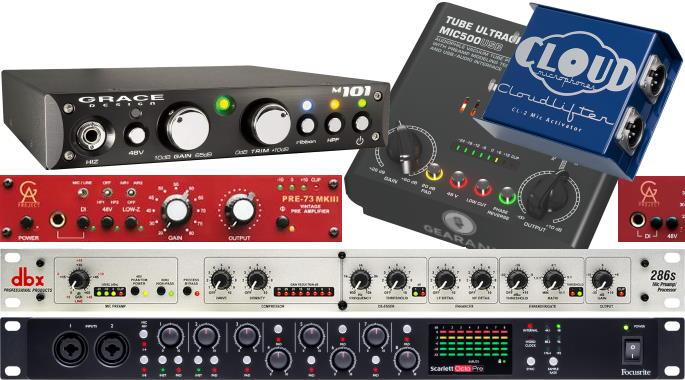
Author & Contributors
Raphael Pulgar
I've been an audio engineer for 20 years specializing in rock and metal recordings. I also play guitar and produce original music for my band and other content creators.
without Phantom Power
Cloudlifter CL-1 Single-Channel Mic Activator
Cons
- Needs an additional XLR cable. Other inline preamps plug directly into the mic.
- Does not work with condensers (and it shouldn't)
Pros
- An essential addition to drive hungry mics like the Shure SM7b
- Pairs well with low output ribbon mics
- +25dB of transparent gain gives great signal to noise ratio
The Cloudlifter CL-1 is an active inline microphone preamp that uses +48v phantom power.
It features a specially designed active circuitry that adds +25dB of transparent gain, resulting in better capture of sonic detail, and making any built-in mixer or interface preamp compatible with Ribbon Mics and gain demanding dynamic mics like the SM7b.
Since it utilizes phantom power, it can only be used with passive dynamic and ribbon mics.
Although it is a preamp, the Cloudlifter CL-1 is often described as a mic boost, and rightly so because it does boost both the volume and sound quality of many mics. The resulting sound is quieter and cleaner with a lower noise floor. When paired with ribbon mics, particularly more quiet ones, the gain on interfaces no longer needs to be cranked, avoiding self-noise buildup.
It's important to note that this does NOT boost mics that already need phantom power. It is not for use with condenser microphones.
If you're not too keen on replacing your preamp and just want a way to improve the sound quality of your dynamic and ribbon mics, then the Cloudlifter CL-1 Mic activator is the way to go. It can also be used to help with long cable runs and if you're looking for an easy to implement clean mic boost.
Specifications
- Channels: 1
- Input Connectors: 1 x XLR
- Output Connectors: 1 x XLR
- Dimensions: 2" x 4.5" x 2"
- Weight: 0.85 lbs.
| Website | Source | *Rating Value |
| Sound On Sound | Paul White | 96/100 |
| Recording Hacks | Matthew McGlynn | 99/100 |
| TapeOp | Mike Jasper | 94/100 |
Under $200 - With Phantom Power
Behringer MIC2200 V2
Cons
- Tube coloration only available on the XLR input
Pros
- Great tonal shaping
- Warms up cheaper condenser mics
- Adds tube depth to incoming signals
The Behringer MIC2200 is an affordable 2 channel 12ax7 tube preamp that warms up even the most brittle of cheap condenser mics. Despite being a "starved-plate" design, this budget mic pre amp still adds good harmonics that give a little more richness than your standard solid-state designs at this price.
It's important to be aware that it doesn't exactly sound like a higher end, high powered tube preamp but it has its own merits. Tone shaping comes in the form of a 12Hz to 320Hz high pass filter and a fully Parametric EQ per channel.
The only downside to the unit is that it starts to color the sound at the XLR input at higher gain settings. Those that are looking for a fully transparent sound might want to steer clear.
Nevertheless, the MIC2200 V2 preamp is good value at the price: You get two channels with great tone shaping and tube warmth.
Specifications
- Channels: 2
- Input Connectors: 2 x XLR, 2 x 1/4"
- Output Connectors: 2 x XLR, 2 x 1/4"
- Dimensions: 19" (W) x 1.75" (H)
- Controls:Gain, Phantom Power, Phase, Highpass Filter (12Hz-320Hz), Fully Parametric EQ, Output
| Website | Source | *Rating Value |
| Gearspace | pkward88 | 80/100 |
Under $300 - No Phantom Power
Cloud Microphones CL-2
Cons
- Not as good value if you're only going to use 1 channel most of the time.
Pros
- Two matched channels
- Solves potential mismatch issues of using two separate units per mic
- Perfect for stereo ribbon or dynamic mics
The Cloud Microphones CL-2 takes the concept of the inline, phantom power fed microphone preamplifier and doubles it for two independent channels ideal for stereo mic setups.
This dual mono version is ideal for matched stereo pairs and enables the use of dynamic microphones as overhead mics without added noise from pushing the mixer or interface preamps.
If you're fan of the original CL-1 single inline mic pre amp from Cloud Microphones but wished for another channel, the CL-2 is the logical choice. The dual mono setup of the CL-2 ensures that the two channels are matched rather than using two separate inline preamps which may have some component tolerance differences. For ribbon and dynamic mics, the CL-2 gives a great clean boost which helps relieve mixer and interface gain stages for a more optimal gain level.
Much like other inline preamps, phantom power needs to be turned on. This also makes it unusable with condenser mics.
If you're looking to augment your matched ribbon or dynamic mic pair and make it work more efficiently, with a lower noise floor and less stress on the preamps of your interface or mixer, the CL-2 by Cloud Microphones is a great pick.
Specifications
- Channels: 2
- Mic Preamps: 2
- Input Connectors: 2 x XLR
- Output Connectors: 2 x XLR
- Dimensions: 4.5" x 5.75" x 3.75"
- Weight: 1.19 lbs.
| Website | Source | *Rating Value |
| Sound On Sound | Paul White | 96/100 |
Best Budget Mic Preamp Hardware Under $300 - With Phantom Power
Golden Age Project Pre-73 Jr
Cons
- Not for purists looking for a 1:1 Neve 1073 replica
Pros
- Brings the Neve sound within reach to many
- Great build quality and components
- No compromises on the circuitry
The Golden Age Pre 73 Jr is the little sibling of the standard Pre 73, which in turn is based on the classic Neve 1073 preamp.
Featuring discrete (no IC's) circuitry similar to the original, the Pre-73 Jr is an affordable take on a well-loved classic.
Overloading the preamp gain adds character and punch while maintaining clarity.
The classic 1073 style preamp has been heard on countless recordings but the price of an original unit excludes all but the most high-end recording studios. Getting the signature N-style preamp sound at this price point is definitely a plus especially for those looking for that sound on a budget. Despite being very simplistic and even more minimal than its bigger brother Pre 73, what matters most for users is the harmonic content it adds to raw tracks that make them punchier and easier to mix.
For it to be great value however, you may need microphones that pair well with it. No-name mics with dubious quality won't do because preamps are made to complement and enhance what's already there.
This is your ticket to get that famous 1073 sound in your mixes: bold, punchy and smooth at the high frequencies. It provides all the character you need to take your mixes up a level.
Specifications
- Channels: 1
- Mic Preamps: 1 Class A Mic Preamp
- Input Connectors: 1 x XLR-1/4" combo (mic), 1 x 1/4" (Hi-Z)
- Output Connectors: 1 x XLR, 1 x 1/4"
- Controls:Gain, Phantom Power, Phase, D.I. Switch, Output
| Website | Source | *Rating Value |
| MusicTech | John Pickford | 90/100 |
| YouTube | PerSona Music | 92/100 |
dbx 286s Single-Channel Mic Preamp
Cons
- Simplified controls limit tweakability
Pros
- Great sounding preamp
- Gate/expander one of the best I've tried
- Dynamics and EQ well thought out
I chose the dbx 286s among many others because it's the only channel strip in the price point (even the entire category!) that has a noise gate. More expensive offerings provide better preamps, more robust equalization and compression controls and other features that make them popular but sometimes, one key feature is all it takes to secure the purchase.
When I first started using it for voiceovers, many people complimented the cleaner and smoother sound of my production with it. Up until that point, I've only been recording straight to DAW and adding plugins to address things like sibilance, noise and dynamics. The dbx 286s does everything better and allows me to have zero latency on my processed sound when monitoring. Using outboard gear has a neat effect of feeling more "connected" with your performance compared to having that small bit of latency around 4ms when using plugins. Sometimes it's that psychological boost that's needed to elevate performances and as the first piece of outboard gear I've gotten for my current small project studio, it's been a great tool that brings me back to my days working with analog gear in a larger recording studio.
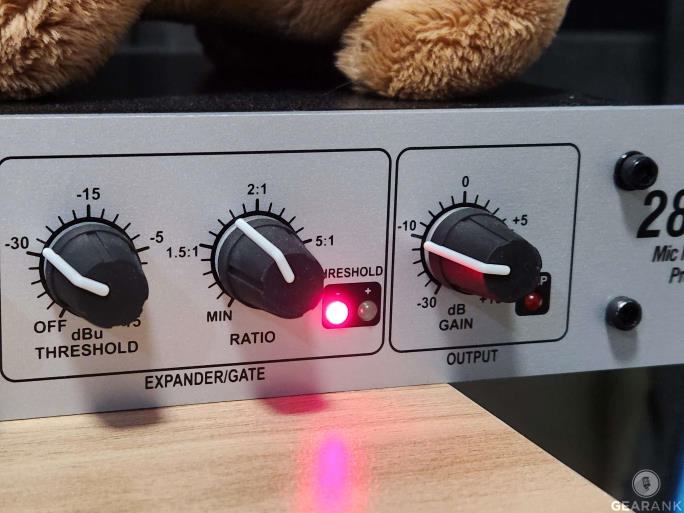
The expander/gate section ensures noise like AC hum and other low-level noise get filtered out.
The great price point and feature set make it great value for any studio. Even comparing it with more expensive channel strips, it packs enough of a punch to hang with the big boys, especially with how well the dynamics are handled.
One thing that might sway people away from it would be the simplified controls for each segment following the preamp. Tweakers that rely on minute adjustments of various parameters might find the controls a bit too limited. Even so, I actually preferred this simplicity because it didn't keep me fixated on getting everything right.
Voiceover example recorded with the dbx 286s*
The dbx 286s is a great addition to any studio, big or small. As a vocal chain, it adds a professional sheen to singing and great dynamic control for spoken word and voice overs. While the simplified controls may not be to everyone's liking, each module is cleverly engineered to have a useful setting no matter what the input. If you're looking for your first channel strip or preamp, the dbx 286s is a great choice at a great price.
If you'd like a detailed explanation of all its functionality, then take a look at my extended dbx 286s review.
Specifications
- Channels: 1 (some people mistake the Insert for a second channel)
- Inputs: XLR (mic), 1/4" TRS (line), 1/4" TRS (insert)
- Outputs: 1/4" TRS - 100Ω balanced / 200Ω unbalanced
- Preamp: 0dB to +60dB gain with phantom power on XLR pins 2 and 3
- Compressor: ratio 4:1 with a threshold range of -40dBu to +20dBu
- De-Esser: frequency range 800Hz to 10kHz High Pass, 12dB/octave
- Enhancer: with high frequency program-controlled shelving equalizer, approximately 15dB maximum HF boost, and low frequency bell-shaped boost @ 80Hz, bell-shaped cut @250Hz, ratio is approximately 2:1
- Expander/Gate: with an adjustable expansion ratio from 1.5:1 to 10:1
- Rackmountable: Yes - 1U
| Website | Source | *Rating Value |
| Gearank | Raphael Pulgar | 95/100 |
| YouTube | Podcastage | 98/100 |
Under $500 without Phantom Power
Cloud Microphones CL-4 Cloudlifter Rackmount
Cons
- Rackmount design might not be for everyone
Pros
- Great for drum mic groups or multiple singers
- Matched circuits ensure phase coherence
- More convenient than using multiple single preamps
The Cloud Microphones CL-4 expands on the CL-1 inline preamp; this time with 4 independent channels in a rackmount unit.
Discrete JFET circuitry and a transformerless design keeps the signal path clean and clear.
For live use, the added gain from the CL-4 enables you to cut through a live mix with full dynamics without increasing the risk of feedback.
The rackmount chassis is a standard 19" rack unit and manufactured in the USA.
Adding gain without raising the noise floor is always a welcome improvement. With the CL-4, an ensemble of singers can benefit from feedback-free clean gain will result in better live presentation. In the studio, a collection of dynamic drum mics benefits from having a lower noise floor in post as gating them isn't as difficult.
Since it's a rackmount unit, it might be an inconvenience to those that don't have a rack yet. Desktop operation is fine but it's far more convenient to have a case ready.
Cloud Microphones have done it again with the CL-4 Rackmount. For those that need the added gain without noise or feedback risk in live situations, the CL-4 rackmount is an excellent addition to your rig.
Specifications
- Channels: 4
- Mic Preamp: 1 Vintage Style Preamp with Tantalum Capacitors
- Input Connectors: 4 x XLR
- Output Connectors: 4 x XLR
- Dimensions: 19" x 1.75"
- Weight: 1.19 lbs.
| Website | Source | *Rating Value |
| YouTube | Performer Magazine | 90/100 |
| Sound On Sound | Paul White | 96/100 |
Under $500 With Phantom Power
Golden Age Pre-73 MKIII Single-Channel Mic Preamp
Cons
- Plastic parts could be made with better material
Pros
- Accurate reproduction of the Neve 1073
- Top shelf components and circuitry result in sweet harmonics
- Sturdy metal housing
The Pre-73 MKIII is Golden Age's reasonably priced nod to the classic Neve 1073, featuring vintage style tone coloration courtesy of its solid-state design with Tantalum capacitors.
This single-channel preamp gives you up to 80dB of gain, which makes it compatible with passive ribbon mics, while the high pass filter and 2-position high-frequency boost allows for sound shaping.
The unit is housed in a red mini-rack form factor that is easy on the eyes and sturdy enough to survive regular use.
The metal housing is sturdy, but the plastic parts leave a little more to be desired. But that doesn't take away the quality of the circuitry. The sound is rich and sweet just like the preamp it's based on.
Add analog vibe to your recordings with the Golden Age Pre-73 MKIII, highly recommended.
Specifications
- Channels: 1
- Mic Preamp: 1 Vintage Style Preamp with Tantalum Capacitors
- Input Connectors: 1 XLR/TRS Combo, 1 x Hi-Z
- Output Connectors: 1 x XLR, 1 x 1/4"
- Controls: 80dB Gain, Output, Phantom Power, Phase, Input Impedance, Highpass filter
- Dimensions: 1.75" x 9.5"
- Weight: 6.8 lbs.
| Website | Source | *Rating Value |
| YouTube | recordingrevolution | 95/100 |
| Bonedo (German) | Nick Mavridis | 90/100 |
Focusrite Scarlett OctoPre
Cons
- Some plastic parts may become faulty from mishandling
Pros
- Great way to expand inputs on select Focusrite interfaces
- Upper frequency harmonics give smoothness and shimmer to tracks
- 8 channels is enough to record drums
- Excellent gain and dynamic range
The Focusrite Scarlett OctoPre is an 8 channel preamp that allows the expansion of the inputs of select Scarlett audio interfaces. The preamp enables additional input and output options for use with multiple microphones; especially when recording setups like drums and orchestration.
With a whopping 109dB dynamic range, the OctoPre is a great choice for the aforementioned setups as well as recording dynamic singers and spoken word.
Recording quality is consistent with Focusrite's top-tier audio interfaces. So purchasing an affordable interface that has ADAT out and pairing it with the OctoPre is a great combo for small studios. The sound is transparent with just a little crispness at the highest end of the spectrum, perfect for giving life to vocals and smoothing out brittle sounding cymbals with rich harmonics.
Do note however that the cover for the ADAT port can break if mishandled.
If you're looking to add more inputs to your existing audio interface with great sounding Focusrite preamps, the Scarlett OctoPre is the obvious choice in this price range.
Specifications
- Channels: 8
- Mic Preamps: 8
- Frequency Response: 20Hz - 20kHz
- Input Connectors: 8 x XLR-1/4" combo, 2 x Optical Toslink (ADAT)
- Output Connectors: 8 x 1/4"
- Controls:Gain, Phantom Power, Sync, Sample Rate, Mic/Line, Pads, Output
- Weight: 7.1 lbs.
| Website | Source | *Rating Value |
| Bonedo (German) | Alexander Berger | 90/100 |
JHS Colour Box V2
Cons
- Stompbox form factor not for everybody
Pros
- Versatile Neve style preamp in a box
- Compact form factor
- Doubles as an overdrive pedal
- Great for stage and studio
You're probably wondering what a stompbox is doing in a mic pre amp guide. JHS has thrown conventions aside and put a Neve-style console preamp and EQ circuit into a stompbox format. This was borne from JHS founder Josh Scott's goal of replicating guitar tones recorded direct to console with the strip hitting saturation similar to The Rolling Stones and The Beatles to name a few.
This V2 iteration takes that concept further by adding more console-like features to the stompbox, enabling it to be used as a true mic preamp and more.
It features a fully analog signal path with a newly added output transformer in this V2 iteration. It also includes a phantom power pass-thru which lets your interface or mixer's phantom power go through the preamp and into your condenser mic. Hi/Lo input adjusts headroom according to the input needs.
The input is a combo TRS/XLR jack so you can use microphones as well as guitars with it. Outputs are covered by separate XLR and 1/4" jacks.
The pedal is literally a "Neve in a box" which has never been heard of before. Aside from being a preamp, there are many different uses for the Colour Box V2 such as using it as an overdrive pedal or even a bass D.I.
Not exactly a downside but it being in pedal form might not be to everyone's liking.
The JHS Colour Box V2 demands to be taken seriously as both a studio and stage tool. Even if you are only getting it as a preamp, you are bound to find a dozen or more uses for it just like many others have.
Specifications
- Channels: 1
- Mic Preamp: 1 Vintage Style Preamp with Tantalum Capacitors
- Input Connectors: 1 XLR/TRS Combo, 1 x Hi-Z
- Output Connectors: 1 x XLR, 1 x 1/4"
- Controls: 80dB Gain, Output, Phantom Power, Phase, Input Impedance, Highpass filter
- Dimensions: 1.75" x 9.5"
- Weight: 6.8 lbs.
| Website | Source | *Rating Value |
| TapeOp | Chris Koltay | 96/100 |
| Premier Guitar | Joe Gore | 80/100 |
Best Mic Preamp Under $1000 With Phantom Power
Grace Design m101 Single Channel Mic Preamp
Cons
- Priced high for a "budget offering"
Pros
- Excellent harmonic content without affecting frequency response
- Compact, high-quality enclosure
- High grade components and circuit
- Ribbon mic mode complements the microphone type well
Compared to many offerings at this price point the Grace Design m101 looks minimal, even underfeatured. But what it lacks in features, it makes up for in sound and simplicity.
It is a mic and instrument preamp that utilizes premium components like 0.5% precision metal film resistors for signal clarity and a 12-position gold-plated rotary gain switch.
It also features improved RFI suppression for studio quality clear and quiet performance.
It has a ribbon mode that applies more gain and phantom power protection for working with ribbon mics.
Most of what the Grace Design m101 brings to the table are on the component and circuitry level rather than with controls. That being said, it's an amazing sounding preamp that doesn't necessarily change the frequency response of your mics, but rather, it gives your recordings a sense of depth and clarity that is usually lost with cheaper preamps.
The wide 75dB gain range is also a boon for dynamic mic users as it's capable of driving even the most power-hungry broadcast dynamic mics.
Given the sound, build and circuit quality, there isn't much to fault about it. You get a preamp at this price point for specific tonal or harmonic characteristics. The law of diminishing returns starts to matter more at this price point as well so the Grace Design m101 is a great value offering.
While it doesn't score points for heritage, it does rank high for top-tier componentry, circuit design, noise floor and clarity; all in a simple-to use half-rack format. If you're looking for a straightforward, studio quiet, and transparent sounding mic preamp, then check out the Grace Design m101.
Specifications
- Channels: 1
- Mic Preamps: Grace Design preamp with Ribbon Mic mode
- Input Connectors: 1 x XLR, 1 x 1/4" (Hi-Z)
- Output Connectors: 1 x XLR, 1 x 1/4" (Balanced), 1 x 1/4" (Unbalanced)
- Controls: Knobs: Gain, Trim | Buttons: 48V Phantom Power, Ribbon Mode, HPF, Power
- Dimensions: 1.7" x 9" x 8.5"
- Weight: 2.4 lbs.
| Website | Source | *Rating Value |
| Gearspace | Fly Soulo | 95/100 |
| TapeOp | Editor | 94/100 |
Things To Consider When Buying a Mic Preamp for Vocals or Instrument Recording
-
Many of today's audio interfaces come with built-in preamps but, and most of them lean towards transparency, which is all good - until you itch for more. Most Solid State Mic Preamps are made to scratch this itch for better quality, offering improved transparency and more control over the sound. They are also usually transformerless to reduce sound coloration.
When you find yourself looking for vintage-style warmth and coloration, you'll want to go for Tube Mic Preamps that mimic old recording equipment. These mic pres mimic old school circuitry and components, using actual vacuum tubes and even customized transformers to get as close as possible to the sound of the preamp they are reproducing. While modern production techniques have made these units more reliable, it is still safer to handle these units with care, because of their tube component.
Note that coloration and transparency is not limited to the type of circuitry used. There are solid state Preamps that are designed to provide vintage style voicings, and there are tube preamps that can be transparent. If you're not sure what you want, you can use the age and style of your favorite tracks as your starting point. Some FET Mic Preamps are designed to mimic some tube saturation by clever circuit design. These are generally more durable and consistent than their tube counterparts but can get harsher when pushed.
- Mic preamps are designed to increase gain without compromising on the noise floor. Aside from vocals, mic preamps are also useful for augmenting instruments like drums, acoustic guitars and amplifiers, some even come with Hi-Z inputs for electric guitars and basses. Transparent preamps are more versatile and are designed with clean headroom in mind. Some designs color the sound in pleasing ways with harmonics or some equalization.
- Many of the recommendations in this edition of the guide are single channel preamps and are suited to augment built-in preamps for single-source recordings. 2 channel preamps are usually made with matched componentry, ensuring better consistency versus using two single-channel preamps. While there are multi-channel preamps in the market today, they mostly function as additional inputs for audio interfaces. Most Mixing Boards and audio interfaces already have decent preamps for recording and the market has shifted in favor of preamps with fewer channels that are definite upgrades over many built-in preamps.
- Aside from the basic XLR input to TRS line level output that characterizes mic preamps, many offer a range of other I/O options. Other input ports include 1/4" Hi-Z inputs for instruments like electric guitars, 1/4" TRS line level inputs and 1/4" Return inputs. On the output side the options include XLR and ADAT. If you are looking to expand the capabilities of your ADAT compatible console or audio interface, then you'll want preamps with ADAT output.
-
You'll want a preamp that fits in well with your other gear, and form factor plays an important role. This guide features inline, rackmount and desktop preamps.
Inline preamps usually have a cylindrical form factor and mount directly into the output of your mic. They are also usually phantom powered. other inline preamps, come in a D.I. box type format.
Rackmount preamps occupy either a full horizontal rack or in some cases like the Grace Design m101, are half-racks.
Desktop preamps are exactly what they are and are usually non-rackmountable.
The JHS Colour Box V2 is an exception to these as it comes in a stompbox format.
It is also important to know where the ports are placed so you know how to position them. We've included the dimensions and weight (where available) in this list so you can know before purchasing if they will fit into your available space.
- Important features that you should look out for include phantom power and an input pad. Other features that can be practical include EQ and/or high-pass/low-pass filters, noise gates, metering and power switching.
Transparency vs Coloration
Sound Source
Number of Channels
Input and Output Ports
Form Factor
Extra Features
Best Microphone Preamps Selection Methodology
The first edition was published in 2017.
We began by looking at all widely available standalone preamps at US based retailers that are intended for use with microphones, except that we excluded 500 series modules.
We short-listed 41 sub $1000 mic preamps to rate for this guide and then collated a total of over 13,400 ratings, reviews and forum discussions about each preamp and processed those data with the Gearank Algorithm to produce a rating score out of 100 for each one. We processed 19.6% more ratings sources for this edition than the previous one.
We then used these ratings to select the highest rated in each of the categories above to recommend. For more information about our methods see How Gearank Works.
About the Author and Contributors
Here are the key people and sources involved in this guide's production - click on linked names for information about their music industry backgrounds.
Lead Author & Researcher
Raphael Pulgar
I've been an audio engineer for 20 years specializing in rock and metal recordings. I also play guitar and produce original music for my band and other content creators.
A cool piece of trivia about this guide: I bought the dbx 286s because of the previous edition. At the time I wrote the previous edition I didn't feel like I needed an external preamp in my project studio. But as time went by, I slowly realized the limitations of my interface's built-in preamps. I chose it for reasons I outlined in my extended dbx 286s review. It's a great addition to my studio gear. Informed decisions go a long way!
Contributors
Jason Horton: Editing and Illustrating.
Media
Main/Top Image: By Gearank.com using photographs of the Grace Design m101, Behringer MIC500USB. Cloud Microphones CL-2, Golden Age Pre-73 MKIII, Golden Age Project Pre-73 Jr, DBX 286s and Focusrite Scarlett OctoPre.
The individual product images were sourced from websites, promotional materials or supporting documentation provided by their respective manufacturers except for the dbx 286s expander/gate which was photographed by the author.



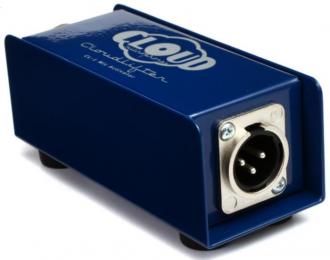

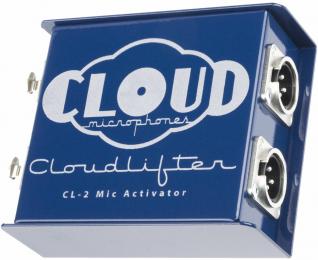
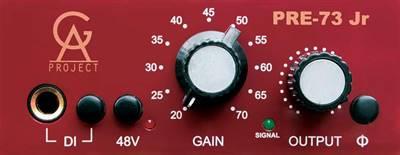

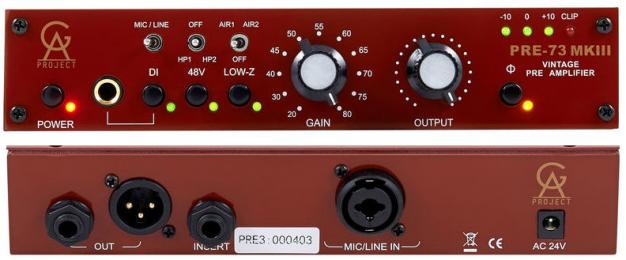

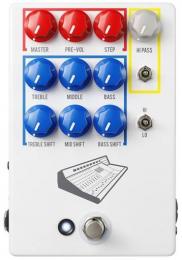
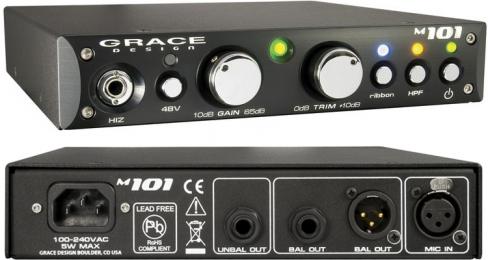
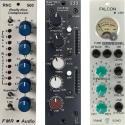
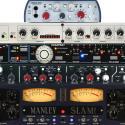
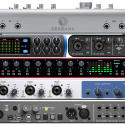
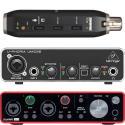

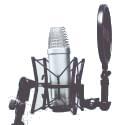
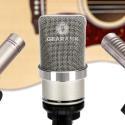
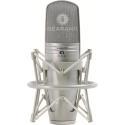
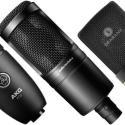
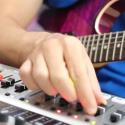





Comments
Publication of our September
Submitted by Jason Horton on
Publication of our September 2022 Edition resulted in the following preamps coming off the recommended list above:
The March 2021 edition saw
Submitted by Jason Horton on
The March 2021 edition saw the removal of the following preamps from the recommended list above, but you can still see our analysis of them:
As a result of our April 2020
Submitted by Jason Horton on
As a result of our April 2020 update the following preamps came off the recommended list above, but you can still read our analysis of them:
Today we removed the
Submitted by Jason Horton on
Today we removed the Focusrite OctoPre MkII Dynamic Mic Preamp from the recommended list above due to a lack of availability.
Can any of your rack units
Submitted by Mort Salk (not verified) on
Can any of your rack units convert the processed analog input to MIDI for output? If not, does any manufacturer rack have this capability?
None of the mic preamps or
Submitted by Jason Horton on
None of the mic preamps or vocal effects processors, that are on our recommended lists have the ability to convert audio to MIDI.
Surprised the Millennia HV
Submitted by Josh Clegg (not verified) on
Surprised the Millennia HV-35P wasn't included in the "under $1000" class. HV-3 is used in film scoring and classical music recording everywhere (and in my home studio!)
It is on our short-list and
Submitted by Jason Horton on
It is on our short-list and remains eligible for inclusion, but so far it hasn't quite rated high enough for us to recommend it: Millennia HV-35P Rating.
As a result of our February
Submitted by Jason Horton on
As a result of our February 2018 update of this guide the following models were removed from the recommended list above, however you can still read what we have to say about them:
I need a preamp mainly for
Submitted by Surya (not verified) on
I need a preamp mainly for the phantom power source for my blue encore 300 condenser mic, for my vocal performances. I don't need multi channel. As the venues I am performing have serious power issues,is there any preamp that runs on rechargeable batteries without depending on the power at the venues?
Vocal Effect Pedals like the
Submitted by Alexander Briones on
Vocal Effect Pedals like the TC-Helicon Mic Mechanic 2 can give you what you need. It comes with a built-in mic preamp, it can supply phantom power, and it can run on four AA batteries.
Still, no portable mic preamp can help you if the power issues affect the venue's PA system. It also can't save you from the dangers that electrical issues pose, so it would be best to let the venue administration know of any power related problem.